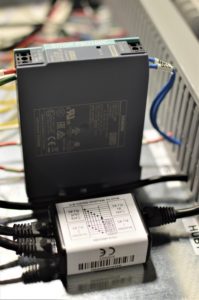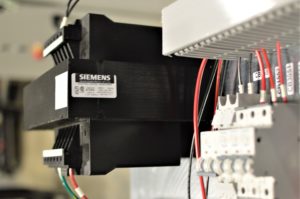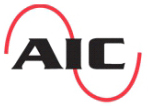Are you uncertain about choosing the correct power supply unit (PSU), transformer, battery backup, or uninterrupted power supply (UPS) for your application? Do you want to know more about your 24v power supply options? If so, Applied Industrial Controls, Inc. can assist with sizing and selecting a cost-effective device. Get in touch with us today for all your power supply needs.


What Should I Consider When Looking for a Power Supply?
Power supplies convert AC to DC. Choosing the correct power supply for an industrial control panel is important because it must have the capacity to power all devices within the system. Most industrial voltages are standardized according to the industry and application, and these are known as common control voltages. For example, controls like light switches and wall plugs typically use 120V AC because it is a readily available voltage and is used primarily in the North American residential and commercial construction industry.
Certain automation devices can work with a variety of voltages; however, most control system components like HMIs, PLCs, I/O modules, and relays have been designed to use a 24V DC power supply. This voltage is common for industrial control panels because of the safety aspect of lower voltages, industry regulations, and power delivery requirements; however, some devices and panels can utilize 24V AC power supply, 12V DC, and 120V AC.
There are two main types of 24V DC power supplies – linear and switch mode. Linear power supplies are older technology and less expensive, but they have a stable DC voltage output with little electrical noise. These work well for automating systems and applications using highly sensitive devices. Newer designs have an improved output and increased efficiency, whereas older technology has excessive electrical noise.
Some features and benefits available for DC power supplies include:
- Adjustable output voltage
- Remote sensing and control of voltage
- Load sharing with other power supplies
- Multiple input and output voltages
- Parallel redundancy for a power supply failure
- High voltage and high current protection
- Built-in condition monitoring
- Integration with battery backup systems
When specifying a DC power supply, the input AC, output DC, output current (Amps), and power rating (Watts) must be known and sized for the entire control system. Engineers at Applied Industrial Controls, Inc. can help you calculate your power supply needs.
What Are the Differences Between Linear and Switch-Mode Power Supplies?
The main difference between linear and switch-mode power supplies is how the input AC voltage converts into the output DC voltage. Linear power supplies deliver DC voltage by using a transformer to filter out the input AC voltage as it passes through. Switch power supplies use a power transistor that produces a high-frequency voltage. This voltage is passed through a transformer to filter out the AC voltage and any electrical noise. Switch power supplies are typically more expensive than linear power supplies; however, they are more efficient, more compact, have a larger capacity, handle a range of input voltages, have a longer lifespan, and are typically smaller.


What Should I Consider When Looking for a Control Transformer?
A control transformer converts an input AC voltage to a secondary, different AC voltage for the industrial control panel devices downstream. Control transformers are always single-phase AC to single-phase AC, whereas power supplies convert AC or DC to a DC output. A control transformer can use two legs of a three-phase supply as a single-phase input voltage. Other common names for control transformers are Industrial Control Transformers, Machine Tool Transformers, and Control Power Transformers (CPTs). Single-phase transformers can easily use a three-phase source.
For example, a control transformer can use two of the three legs of a 480V AC power source to step the voltage down to 120V AC. Control transformers maintain a constant power from input to output. This means when the voltage in this example steps down by a factor of four, the current at the new voltage increases by a factor of four.
A control transformer differs from a power transformer. It is specifically designed for sole use with the control circuit and does not supply power to larger devices such as motors and actuators. When specifying a control transformer, the input AC, output AC, output current (Amps), and power rating (Watts) must be known and sized for the entire control system. Engineers at Applied Industrial Controls, Inc. can help you calculate your power supply needs.
Why Should I Use a UPS?
A UPS is an uninterrupted power supply. A UPS increases the resilience and reliability of the system. It is an important component in industrial plants and data centers because it can bridge power and supply the required 24V power for critical equipment for several hours during a power failure. During the first few hours of a power failure, equipment and systems can be shut down safely and controlled, saving critical information and sending faults or alarms to remote operators to correct the power issue. When specifying a UPS, it is important to know the desired operating time after power failure and the power load it will need to support.
Get in touch with Applied Industrial Controls, Inc. today to get the information you need for selecting the best power supply for your application.

MANUFACTURERS CERTIFICATIONS

